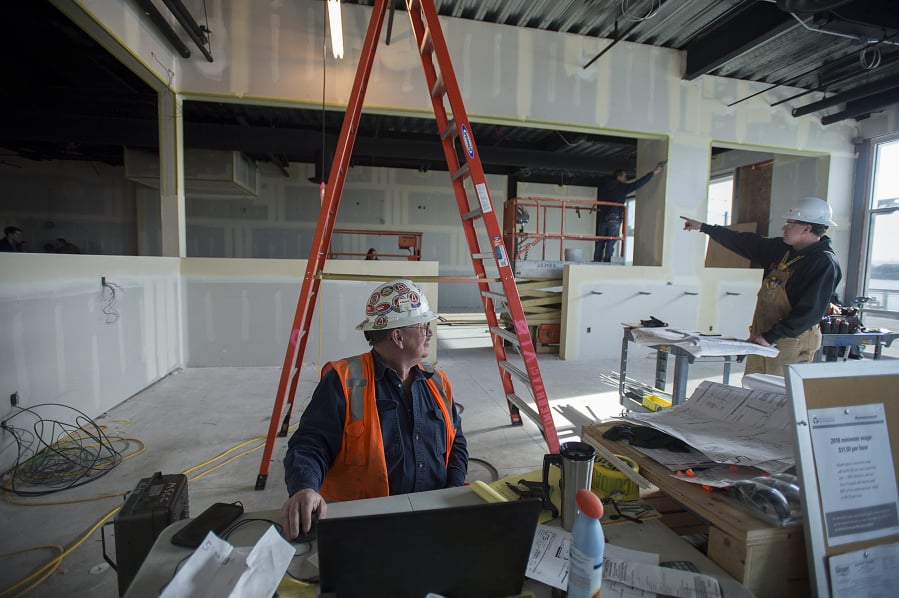Clark County’s unemployment rate jumped to 5.4 percent in January, according to Washington Employment Security Department data released Tuesday.
That’s an uptick of almost half a percentage point over December’s rate of 5 percent, but according to Southwest Washington regional economist Scott Bailey, there are a couple of factors that explain the change.
The first is normal seasonal trends: Unemployment tends to grow in January due to layoffs at the end of the year and the end of the holiday season. By comparison, Clark County’s January 2018 unemployment rate was 5.5 percent.
“That decline (in employment) is usually bigger, just for seasonal layoffs,” Bailey said. “The upshot is the labor market is still in really good shape.”
The second factor is the impact of the federal government shutdown, which began Dec. 22 and continued until Jan. 25. An estimated 800,000 federal workers were furloughed or otherwise impacted by the shutdown, including 400 in Clark County.
“Federal employment was depressed — that pushed us down a couple tenths of a point,” Bailey said. “That should spring back next month.”
Clark County’s nonfarm employment dropped by an estimated 2,500 jobs in January, ending at 165,700. Aside from the federal jobs, some of the biggest losses were in retail trade, which lost 800 jobs; business services, which lost 200 jobs; and construction, food services and K-12 education, which each lost 300 jobs.
When reporting the state-level jobs numbers, the Employment Security Department posts the actual change in jobs and a “seasonally adjusted” figure, which is recalculated to exclude large changes in the workforce that reliably occur at the same point in each year, such as thousands of students seeking summer jobs in June.
County-level unemployment numbers are not seasonally adjusted, but in his monthly report, Bailey said he calculated a seasonally adjusted estimate for Clark County that showed a net gain 500 jobs.
The release of January labor market data was delayed until mid-March because the Employment Security Department was waiting for an updated set of benchmark data from the federal government, according to Bailey. The local job market data for February is expected to be released in about two weeks.
Looking at the next few months, Bailey said he expects to see employment begin to move back up starting in March, which is typically when the retail and construction sectors embark on new rounds of hiring.
The economy has grown quickly for several years during the recovery from the recession, he said, so a slowdown in that growth rate can likely be expected in 2019 — but modest growth should continue.
“Vancouver’s development pipeline is full,” he said. “There’s still a lot of projects coming online.”
2018 numbers adjusted
The January labor market update included a substantial reduction to Clark County’s estimated job growth numbers for 2018.
The previous estimates, released in the report for December, showed that Clark County added 5,800 jobs for a 3.5 percent growth rate that outpaced the rates of Portland, Oregon, Washington and the United States overall.
“We do initial estimates based on a sample of employers and historical trends, and anywhere from three to six months after the fact we get tax returns from all employers,” Bailey said. “Usually (the revision) is relatively small.”
In this case, it wasn’t. The revised estimates, which are based on new tax data for the third quarter of the year, show the county gained 3,600 jobs in 2018, for a growth rate of 2.2 percent. For comparison, the U.S. rate is estimated at 1.9 percent; Washington at 2.5 percent; Oregon at 1.6 percent and the Portland metro area at 2.1 percent.
Some of the biggest discrepancies were in construction, which is now estimated to have added 800 jobs rather than 1,600; and the trade, transportation and utilities sector, which is now estimated to have added 300 jobs rather than 1,000.
Not every industry was revised downward — the education and health services sector is now estimated to have gained 1,000 jobs rather than 600.
Even under the revised numbers, several major industries still saw substantial net job gains in 2018. The 800 new construction jobs, for example, point to a growth rate of 6 percent, which Bailey said is strong even if it’s no longer “red hot.”
The estimated numbers for 2018 are expected go through one more round of revision in a couple months, once the Employment Security Department receives employer tax returns for the fourth quarter of the year.




